|
|
|
Downsizing has been on my mind lately. My husband and I recently downsized extensively as part of a move, I'm working with a couple of clients right now on major downsizing projects, and this past week I helped my mom downsize as she moved to a significantly smaller space. On top of that, my daughter and her family are currently downsizing to a much smaller home as part of a temporary relocation. As a result, I've put a lot of thought into the process of downsizing, how it differs from simple decluttering, and how the two processes are related. While it is impossible to downsize without decluttering, and decluttering certainly reduces the amount of stuff in a space (i.e. downsizing), in my mind there is a discernible, though perhaps subtle, distinction between the two processes. Meriam Webster defines the word declutter as follows: (verb) to remove clutter from a room, an area, etc. You will not be surprised to learn that, as an organizer, I have a fondness for decluttering. Indeed, for me it is a mindset, a way of life. I keep a bag, box, or bin for collecting items I wish to get rid of perched in a designated spot in my garage, and I regularly make trips to the thrift store to make donations. It wasn't, however, until this last move that I felt like I could say I had legitimately downsized my belongings. So what's the difference? The definition of downsize is: (verb) to reduce in size. How is this different from decluttering? The distinction, in my mind, between downsizing and decluttering centers on two factors:
Scope Let's start with scope, or extent. One can declutter, or reduce the clutter, of a surface, a drawer, a closet, a room, or an entire house. On the other hand, downsizing refers to the comprehensive reduction of one's possessions. Thus, the scope is broad and all-inclusive. When you legitimately downsize, it is with the intent of living a simpler life, one that reduces your overall footprint and requires less space. Scale Since decluttering simply involves the reduction of clutter, it can be performed on a small scale - such as thinning out a collection or getting rid of items that are no longer functional. If we wanted to get technical, getting rid of just one unwanted or unneeded item could be considered decluttering. Downsizing, on the other hand, requires a tangible change in the amount of stuff you own. When you downsize, you minimize all of your belongings typically with the intent of reducing the size of your living space. Because the scope and scale of downsizing are much broader than is generally the case with decluttering, the process can be a bit overwhelming, and it can be difficult to know where to start. Since I've had to really think this through lately, I've come up with some suggestions for how to approach the downsizing process. Define and Embrace Your LifestyleOften downsizing is motivated by a lifestyle change. It may be one that you have sought out, as was the case for us, or it may be one that is thrust upon you. Whatever the case, the first thing to do when you are faced with downsizing is to examine your situation. For example:
Thinking about potential changes to your lifestyle that may come about as a result of downsizing will help you come to terms with the process and even look forward to living with less. Instead of feeling like a burden, you can start to embrace downsizing as a means of reducing the burden of unwanted, unneeded, unused stuff. Start with the Easy StuffWhen faced with a major undertaking such as downsizing, I recommend starting with the simple stuff and working up to more challenging tasks. What is the simple stuff? In this case, I am referring to those things that are the least stressful to part with - things that have no sentimental or inherent value. Here are a few examples:
Purge Your PaperworkOne unused, often unneeded, item that people frequently hang onto is paperwork. If you are downsizing, now is the perfect time to get rid of all that excess paper. For tips on how to Declutter Papers and Files check out the Information Management section on this website. Let Your Space Be Your GuideIf you are downsizing but staying in the same place, consider how you would like your space to look and feel. If you are downsizing to a smaller space, examine the new space carefully. Take photos and measurements. Only keep those things that will fit the constraints of your space, whether literal, physical constraints, or intentional, functional constraints you have choosen to apply. Only keep the clothes that will fit comfortably within your closet and/or dresser. Only keep the books that will fit on the shelves you have for which you have space...and so forth. Practice ExclusivityThink of your space as an exclusive club - only the best of the best are allowed admission. Choose your favorites, and part with the things that are just so-so. Choose your favorite furniture, your favorite decor items, your favorite wall-hangings/photos/artwork, your favorite kitchen utensils, your favorite clothes. Imagine a space where all the things that surround you are things that you love. This quote from William Morris has always inspired me in this regard: Search for Versatile SolutionsAs you sort through your possessions for those worthy of keeping, look for items that can serve more than one function. Furniture pieces are a great example. Do you have an item that offers both seating and storage? Or a work surface as well as storage? Be RealisticIf your space is decreasing, it is important to choose items that are correctly proportioned. A queen size bed is obviously a better option for a small bedroom than a king size bed. Choose furniture with slim lines such as narrow side tables, a sleek sofa, a petite table, etc. Avoid overstuffed, bulky furniture. Consider how you will use the space as well. Do you need a separate desk, or can you function comfortably with a folding or portable desk? Or could your dining room table double as a work space? Living with LessIf your downsizing efforts are brought about by necessity, and not by choice, you may be feeling frustrated, overwhelmed, or depressed. It's normal to feel that way in such circumstances. Just know that, while changes is almost always challenging, it also brings opportunities for growth and opens the door for new experiences. Look for the positives that will result from this change of lifestyle. There will be many.
12 Comments
My husband and I have recently undergone a major decluttering effort. We have thrown out, given away, or sold a ton of stuff, and it has been amazingly satisfying. As an organizer, I am well-versed in the typical benefits of decluttering such as increased space and decreased stress, but on a personal level, decluttering has blessed my life in a number of unanticipated ways. These unexpected benefits of decluttering have been my favorite part of the process. If decluttering is on your to do list, and you're looking for a little extra motivation to get the ball rolling, consider these added perks that come from decluttering. NOTE: Our decluttering was associated with a move, but you don't have to be moving to enjoy the benefits identified here that can result from a concerted decluttering effort. Open Up New Possibilities for Your SpaceBy freeing up space within your home, you open up new opportunities for utilizing your space. Have you always wanted a craft room? Getting rid of unnecessary clutter could free up the space you need to make your dream a reality. Do you need a home office or a space for your kids to do Zoom schooling? Downsizing items that no longer fit your lifestyle and interests can free up the space you need to realize your current needs. These are biggish examples here, but new possibilities for your space can be realized on a smaller scale as well. For instance, by downsizing books we opened up space on our bookshelves for our scrapbooks. We have lovely scrapbooks that have been sitting on the top shelf of a closet for more than a decade neglected and unappreciated. I'm excited to have them readily available to flip through and share. Become Reacquainted with Your StuffSomething I didn't anticipate when I started decluttering was the increased access it would give me to things I either forgot I had or never used because they were shoved so far back in the cupboard it was difficult to get to them. This was especially true in the kitchen. Since getting rid of unused, unneeded items, I have lots more room in my cupboards, and I have enjoyed rediscovering some of my old favorite things. Discover New Ways to Reuse Old ItemsSometimes you have things you really love, but they no longer work in the way you originally intended. If you really love an item, think about ways to repurpose it - I'm not talking about turning old colanders into planters (although that sort of thing can be fun as well). I'm talking more about finding a new home or a new purpose for an existing item. I've had a blast finding new uses for furniture items, baskets and bins, and even knickknacks. I'll share an example. Many years ago we had a custom china cabinet built to house our collection of Palestinian pottery and dishware (along with a lot of other stuff). It is massive and very 1990's in it's design. I loved it when it was new and for many years after, but it no longer coordinates with any of our furniture and we have fallen out of love with it., so we decided to sell it. Selling the china cabinet was a no-brainer, but it left us with a problem - what to do with our beloved collection of pottery and dishware. At first we thought we would buy a replacement piece, but we couldn't find one we liked. Then we discovered that our new bigger bedroom closet allowed us to downsize by one dresser. The dresser we opted not to use in our bedroom is a beautiful piece of furniture that I absolutely love. No way did I want to get rid of it, but it seemed as though it no longer served a purpose - until I decided to use it as a replacement for the china cabinet. It's both unique and functional. It blends well in the space (despite the fact that it's a dresser) and my china, table lines, and other odds and ends fit inside it beautifully. Rethink Your Priorities, Interests, and GoalsDownsizing affords you the opportunity to reassess what matters to you here and now and let go of things that no longer have value in your life. For example... As we were leaving the old house, I packed up all my craft supplies. As I was unpacking at the new house, I quickly realized that I was not going to have space for everything without purchasing some furniture pieces and storage solutions to contain it all. After a little thought, I decided that I wasn't willing to pay the price in money or space to store stuff I hadn't used in years. Instead, I opted to think through what I would actually use and get rid of the rest. I ended up getting rid of several boxes of things I had either bought and never used (and couldn't recall my original intent for them) or that were left over from long completed projects. What remains are items that appeal to my current interests and goals. Develop a Healthier Relationship with StuffI'm always telling people that decluttering is liberating and rejuvenating, and I have been reminded on a personal level recently just how much truth there is in that claim. It's exhilarating and satisfying and uplifting to walk into a clutter free space knowing that you are surrounded only by things that have meaning and value in your life today. Some of those things may be mementos, others may be tools, and still others will be toys (or things that entertain you). Whatever their purpose in your life, the joy comes in the fact that they serve a meaningful purpose - even the boring but highly practical items. Things take up space not only in the physical world, but also in our minds. Unwanted, unnecessary, and unused items weigh us down by taking up space in our homes and weighing on our consciences. Letting go of such things, allows you to enjoy your possessions rather than be burdened by them. Give It a Try!Decluttering is worth the effort. The benefits are legion. In addition to the unexpected benefits identified here, decluttering saves you time, money, and space. It reduces stress, increases productivity, improves peace of mind and nurtures a sense of empowerment. I encourage you to give it a try. Then please share how this process has blessed your life. I'm always looking to expand my list of the benefits of decluttering!
I consider myself a purger. As an organizer, it's in my blood. Every couple of months I make a run to the thrift store to drop off donations. As such, I did not expect to have much to do in the way of downsizing when we decided to move homes recently. To my surprise, the opposite has been true. To my delight, I have greatly enjoyed the process. I know that for some people (indeed many people) downsizing is intimidating and even painful, but I want you to know that is doesn't have to be. Sure, it takes effort, but it's an effort that pays dividends in emotional and psychological benefits. Why Downsizing Can and Should Be a DelightI have found that every item that passes through my door bound for some location other than my new home leaves me feeling a little lighter. Not only is it one less thing I have to move (and at this point in the process that prospect has real value to me), it's something I no longer have responsibility for. Have you thought about your stuff in those terms before? Every item we own is an item we are responsible for. It's an item we have to clean and maintain and house. It's also an item we are one day going to leave to others to deal with. Knowing that I have fewer things for which I am accountable leaves me with a sense of relief. Another thing I love about downsizing is the opportunities it opens up for creating the home I want. The less junk I have, the more space there is for the things I truly love and value. The easier it is to find things. The confining, crowding effects of clutter are replaced with a sense of tranquility and calm. Does It BelongMoving provides an ideal opportunity to downsize. One way or another, whether you're moving yourself or paying someone to do it for you, there will come a point in the process where you will handle every item you own. It could be going into a box or onto a truck, or it might be coming out of the box or off of the truck. If you're doing it all yourself, then you get the bonus of two opportunities to consider each item's fate. Such is the case with our move. I highly recommend mindful packing/unpacking. Before putting forth the effort to pack an item and transport it to a new location, ask yourself where it fits in your new home and the lifestyle you hope to enjoy there. If an item passes this test only to cause you stress on the other end as to where it belongs, ask yourself if it does belong. Too often we get caught up in the value of an item, either emotionally, financially, or practically. Instead, try thinking about how an item fits into your space and your lifestyle. Things can have intrinsic value without having value to you personally. It's okay to let go of such things. In fact, it's advisable. The Downsizing ProcessOur downsizing process has been multifaceted. When I first started setting things aside to get rid of, I pictured myself having a sale. The time of year and the effort involved (not to mention the time) have caused me to rethink that plan. With one exception, we have given away (or thrown away) every item we have parted with. Here's how the process has unfolded:
Downsizing Is For EveryoneYou don't have to be moving to enjoy the benefits of downsizing. You just need a little motivation, a little energy, and a little time. If you've been meaning to downsize, let this be the impetus to get you moving in that direction. I promise you'll be glad you made the effort. Letting go feels good! It's liberating to release things that no longer serve a purpose in your life, and it's rewarding to find them a good home.
One of the things that has surprised me the most about this process is how many items we have held onto that were in some way damaged or unserviceable. Such things are easy to get rid of and are rarely, if ever, missed. Try starting with these items to build your motivation and go from there. You can do it! In recent weeks, my husband and I have searched for and selected a new home, and tomorrow we sign for it! Needless to say, we are very excited! It is wonderful to get to this point in the process, but there were plenty of times during our search when I seriously contemplated giving up and staying put. There aren't many houses for sale at the moment in our area, and there are even fewer that met our wants and needs. We'd see a house on the internet that seemed perfect only to be disappointed when we saw it in person. Of course there were contenders, but knowing which house to select was intimidating. It's a big decision! To help us in our decision making process my husband developed a grading system. He's good at that sort of thing, and I'm so glad because it works! Why Move?Before introducing our home grading system, I feel like it would be useful to explain why we began searching for a new home in the first place. We aren't changing jobs or seeking to be closer to family or anything that would force us to move, and technically our current home meets all of our needs, though not perhaps as well as we would like. We purchased our current home while living in the Middle East in preparation for a move back to the United States. My husband spent a few days at the end of a business trip searching for a place before returning to Abu Dhabi where we were living. I never saw the home face to face until after we signed for it, and in all honesty, my first reaction was one of (albeit mild) disappointment. In the intervening 7 1/2 years, we have made numerous upgrades and changes to the home, making it our own, but there are some things about it - the things we like least - that we simply cannot change. It occurred to us that we were not stuck here. If we wanted to move, we could, and so we began our search.
To start with, we made a list of each of the spaces in our current home. Next to each space, we gave our current home a letter grade (A, B+, C-, etc.) depending on how well we feel each particular area of our current home meets our wants and needs. This gave us a baseline with which to compare other homes. After looking at a potential home, we would go over our list and grade the contender independent of our current home or other homes we had seen. The idea was to make an honest assessment of how any given home measured up on its own to our list. Then we compared the contender to our ratings for our current home. This made it easy to see whether the home we were considering was actually an improvement over our current home. Seeing the pluses and minuses for each home displayed next to our current home and one another made comparison simple and helped us rule out homes that appealed to our aesthetic but didn't actually meet our needs. We are (almost) empty nesters. Our youngest son is living with us while finishing up a program at a local community college. Despite the fact that our children are grown, we wanted a place where the whole family could gather comfortably on occasion. We wanted a place for our grandchildren to play, and we needed a place where my husband could record his podcast and we could both work from home. I'm sure there were times when our realtor wanted to strangle us! We turned down many a beautiful home because it just wasn't quite right. We were in a position to be able to do so (since we didn't have to move), and we wanted to be sure that we got it right before we upended our lives. The grading system made a huge difference for us in narrowing down our options, so that after two months and countless houses spanning a 30 mile radius we knew the house we wanted when we saw it. Another benefit of using the grading scale was that it helped us to be unified in our search; by thinking through each space, how it functioned, and how we wanted it to function, we were able to come to a consensus about what we were looking for. Here is a look at our home grading system. You'll notice that there are things about our current home that we truly love, but many things we do not love. I think you will also see how clear it became for us on paper that the new home would meet our needs and desires much more effectively. In the interest of simplicity, I have only included the grades for our current home and the home we are purchasing, but we did use this scale to judge most of the homes we considered (some didn't warrant the effort).
As I discussed this blog post with my husband, he pointed out something that I felt was worth mentioning. Most homes have what he refers to as an "X-factor", a single characteristic or space that you fall in love with which makes it possible for you to overlook other aspects of the home that you are less enamored with. In our current home the X-factor is a space we call Narnia. You can read about why in my last blog post, Why a Little Clutter Can Be Good for the Soul.
In our new home it is the all season room - a room with windows on three sides and a lovely tile floor where I intend to do a lot of sitting and reading and writing. What is the X-factor in your home? What does it allow you to overlook? Unless you're independently wealthy, chances are you cannot afford the perfect house. Compromises must be made. Identifying your wants and needs and carefully rating a potential home as to its ability to meet them will help you choose a home where you can feel content and comfortable. If you're in the market for a new home, I hope you are able to utilize a home rating system to make your decision easier. If you know someone who is shopping for a new home, please share this post with them.
We're moving, or at least we think we are. We are certainly considering it seriously. At any rate, we're in a moving mindset. A couple of weeks ago, my husband said to me, "When we move, we're not taking that with us." It happened to be a piece of furniture, and I happened to agree whole-heartedly with him. In fact, my response was, "I was thinking the same thing." And I was. In fact, I have been thinking that about a lot of things, and this has got me pondering: If I wouldn't take it with me when I move, why am I holding onto it? Sometimes the answer to this question is a perfectly reasonable one. Perhaps the item is useful in the current location, but it won't be needed in the new one. Such would be the case if, for instance, you lived in an area where is snows regularly and you were moving to a southern state. You might opt not to bring the snow blower to your new location. Often, however, our reasons for holding onto things we wouldn't take with us if we were moving are not so easy to define and may require a little soul searching. I have decided to begin a pre-move purge. Even if we decide not to move, I know I will be glad that I embarked on this endeavor. No matter what one's current life circumstance, a little purging is always good for the soul, not to mention one's space. Below is my ever-growing list of items I will not be taking with me if and when I move. I've got specific examples, but I've decided to generalize in order to provide information that will be more widely applicable.
STUFF WE'VE OUTGROWN: Clothing is, of course, the first thing that comes to mind, but it is by no means the only category of items that fit this criteria. It is possible to outgrow items not only physically, but also intellectually, emotionally, or simply in terms of preference. As an example, a client of mine recently told me that the music in her CD collection "no longer falls on my ears like it used to." In other words, her tastes have changed. She has outgrown her old music. What have you outgrown? You don't have to wait for a move to get rid of things you no longer love. PILLOWS: The National Sleep Foundation recommends replacing pillows every one to two years. This is because pillows absorb dust, dead skin cells, body oils, and other icky stuff that attracts dust mites and other microorganisms. While it is possible to extend the life of some pillows by washing them every three to six months, they will not last indefinitely. The following are indications that your pillow needs replacing:
MATTRESSES: Like pillows, mattresses serve as collection sites for all sorts of yucky stuff. There are some things you can do to care for your mattress and extend it's life, but generally speaking mattresses should be replaced every eight to ten years. Moving is a great time to assess the condition of the mattresses in your home and leave behind those that have lived a full life. DAMAGED STUFF: I have a tendency to use things until they are unusable. My cell phone is a great example. My children regularly chide me about the fact that it is so outdated (I still have an iPhone 7 and my iPad is 8 years old). But it still works, albeit not as well as I would like. Another example is my blender. The lid to the pitcher does not seat properly unless you physically hold it down. It makes using the blender a bit frustrating. To replace the pitcher and lid costs almost as much as a new blender, so I am not taking the old one with me when I move. It isn't worth salvaging. Most of us have stuff that is broken, stained, frayed, threadbare, or otherwise damaged. We hold onto such things because we once loved them, and we would like for them to be whole again or because we do not want to spend the money to replace them. Whatever our reasoning, holding onto such items only adds clutter to our lives. OUTDATED ELECTRONICS: We have a bin in our attic full of old electrical chargers and cords. I cannot identify the purpose of 99% of these accessories. I strongly suspect that the vast majority of these cables and cords do not work with any device currently residing in my home. We've lived here for seven years and never needed them, so they will not be coming with us when we move. Do you have any outdated electronics in your home? My page Where to Donate or Recycle Electronics offers a variety of resources for disposing of electronics safely and responsibly. UNUSED APPLIANCES: I knew it was time to get rid of the quesadilla maker when I went to make quesadillas and intentionally opted to use another method for preparing them. The same was true for my fondue pot. Unused appliances take up a lot of space, so parting with them is a great way to clear the clutter from your kitchen. UNUSED SURPLUS: I'm a firm believer in being prepared and keeping things on hand that you use regularly. It's wonderful to be able to pull a staple item off the shelf when you run low rather than having to run to the store. That said, most of us hold onto an excess of things we don't use or only use periodically. In the case of food items, this can be doubly wasteful. The space needed to store the items is wasted, and often the items themselves go to waste because they expire and have to be discarded. I happen to have a weakness for school supplies. Despite the fact that I have resisted the urge to 'stock up' on such items during the late summer sales for the past two years since my youngest child graduated high school, I still have drawers and bins teaming with empty notebooks, unopened bags of pens, and other school essentials. It's time to make a realistic assessment of what we will actually use in a timely manner and edit my cache. DUPLICATES: We recently bought a brand new squeegee to push the rain off our deck. A few weeks later we discovered that we already owned a squeegee - the exact same squeegee, in fact. One of them is going to find a new home before we move. A couple of years ago, we received a waffle iron as a gift. We already had a waffle iron. Since getting the new one, I have not used the old one. I'm keeping the new one and bidding the old one farewell. As the wife of an army officer, I also have an impressive collection of serving trays which have seen a lot of use over the years. In addition to my own collection, I inherited several from my step mom. These days they don't get nearly as much use as they once did. Time to pare down the collection and pass some on to another user. Chances are you can think of similar examples among your possessions. If you have two, and one will do, I encourage you to choose your favorite and give the extra one away. STUFF THAT"S MOSTLY USED: The list of examples that fit into this category is potentially unending. I'll just give you a few to get your mind going: lipstick and other cosmetics, nail polish, partially burned candles, gift wrap scraps, craft supplies, medicines you no longer take, paint or glue that's drying up, lotions and other toiletries you tried but didn't love. You get the idea. Look for stuff that's been opened and partially used that's been sitting around for some time. Ask yourself if you're ever going to use it and get rid of it if the answer is no. STUFF I"VE BEEN KEEPING FOR THE WRONG REASON: As an organizer I am not completely immune to the subtle, yet alluring, array of excuses that cause us to keep things we don't want or need. My moving game plan is thus: make an honest assessment as to why I am keeping things and part with those things that have been burdening me in one way or another. Examples include things I've kept out of guilt, things I've kept out of laziness, things I've kept out of a sense of sentimentality, and things I've kept just in case. Whether you are moving or not, it is always freeing to let go of things that have been burdening you, so I'm looking forward to this part of the purging process in particular. Be Motivated By Moving |
Archives
November 2022
Categories
All
|
Proudly powered by Weebly


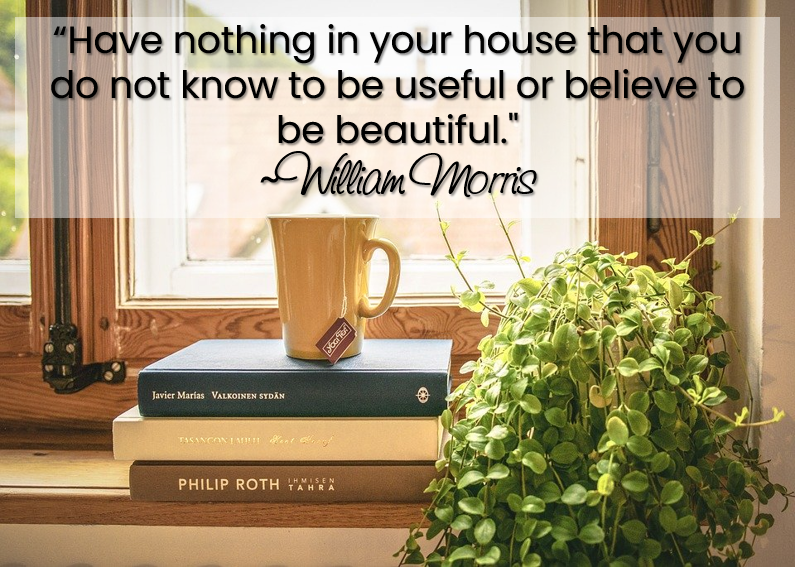


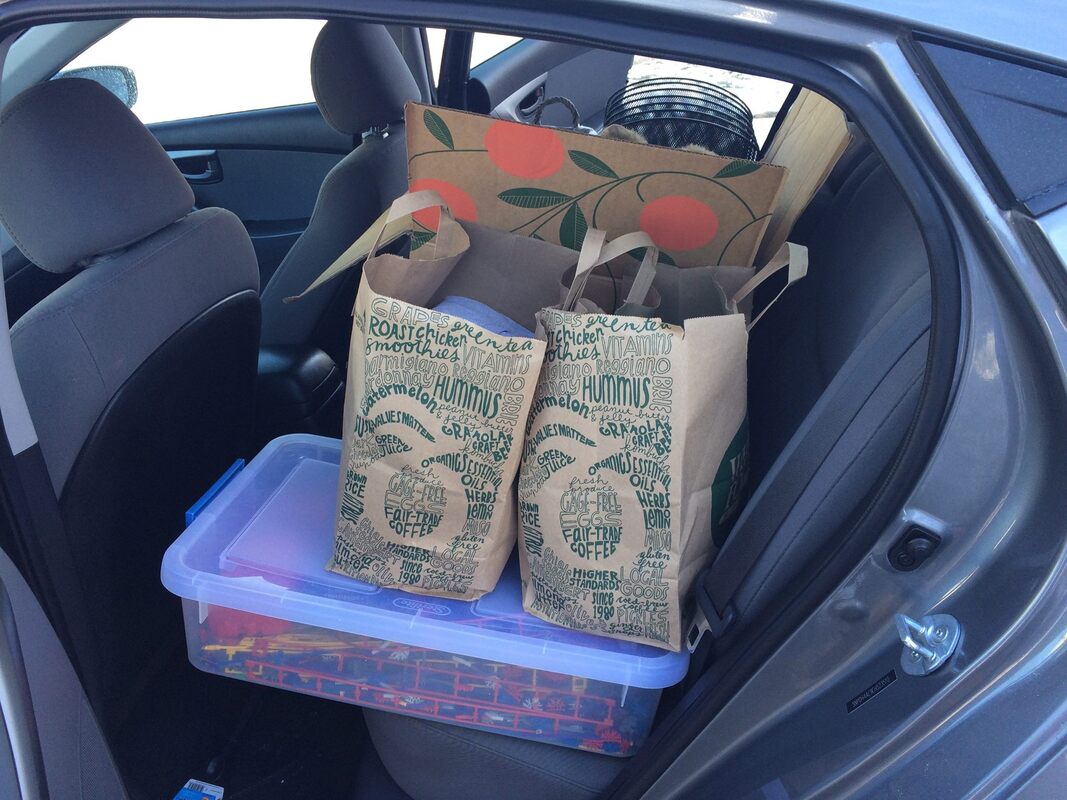


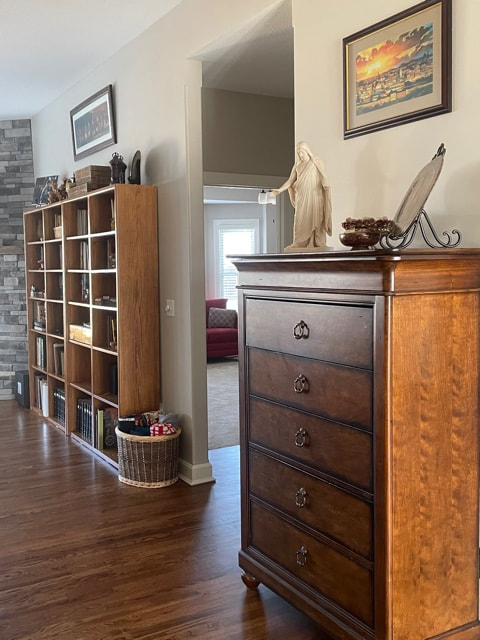








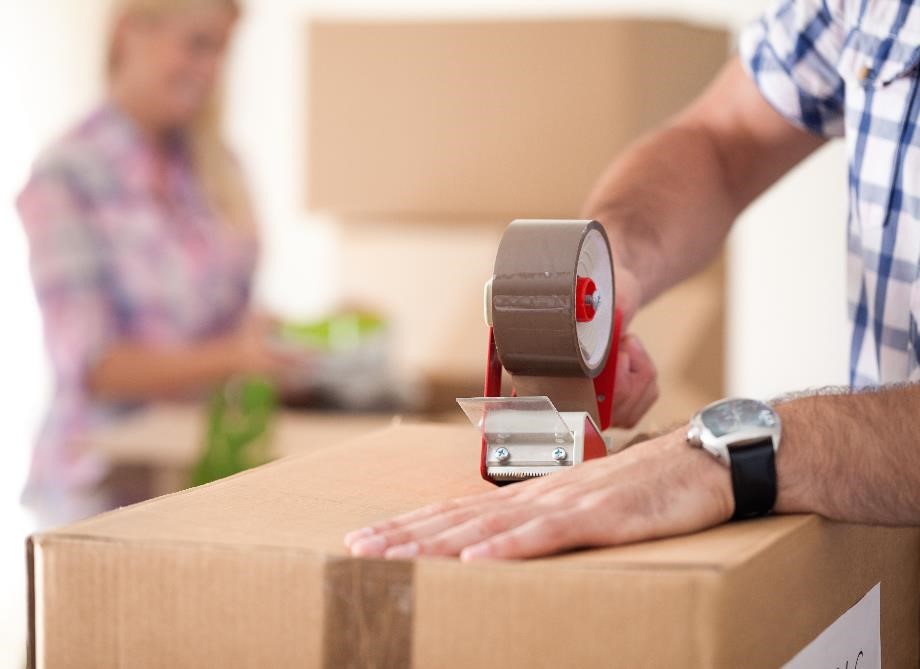
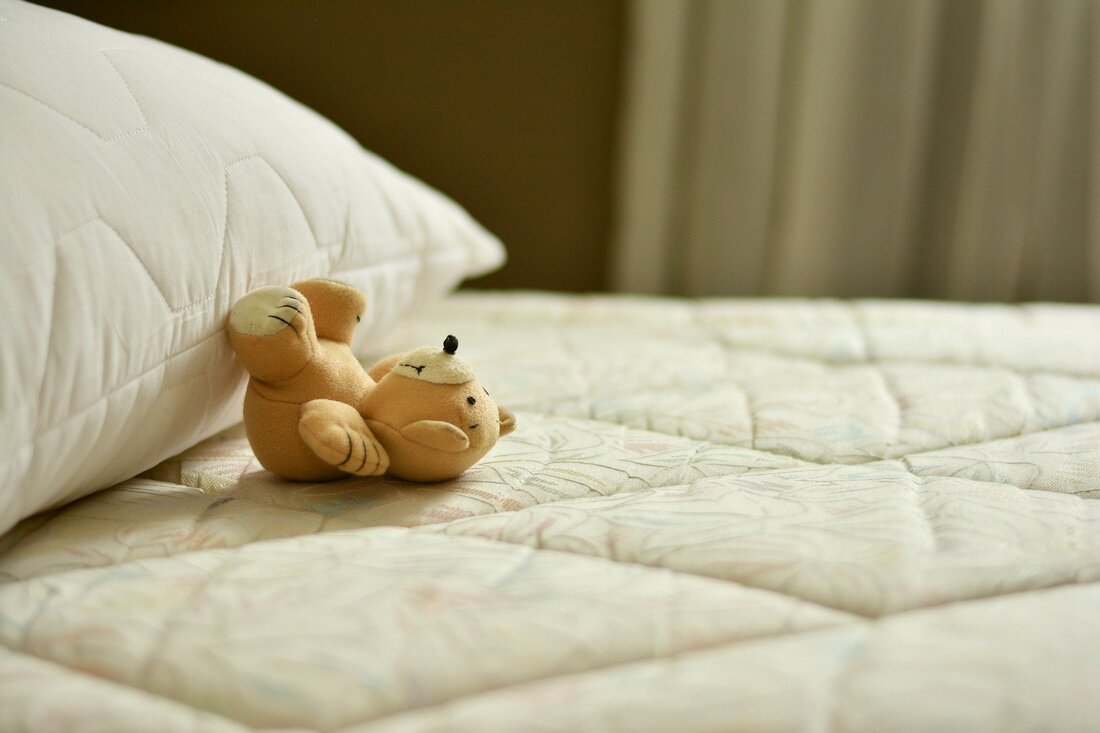


 RSS Feed
RSS Feed